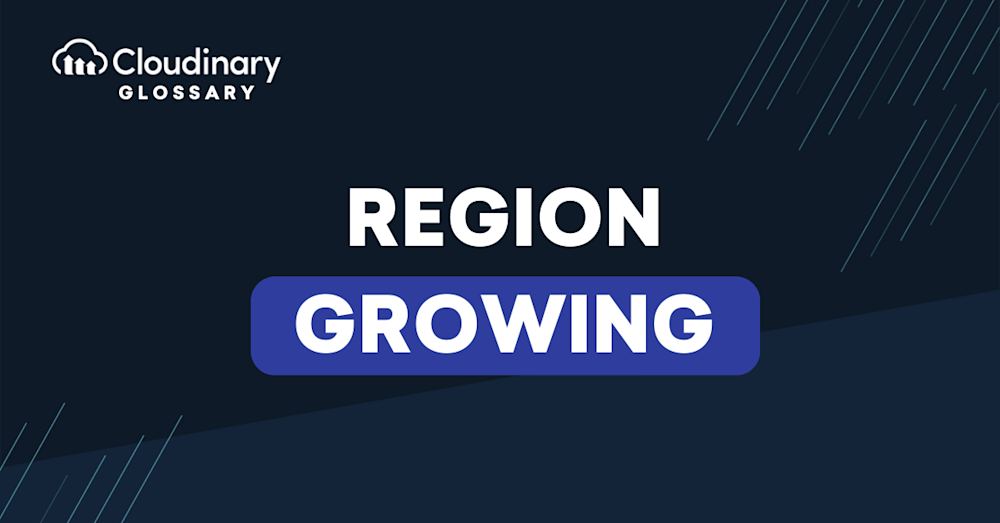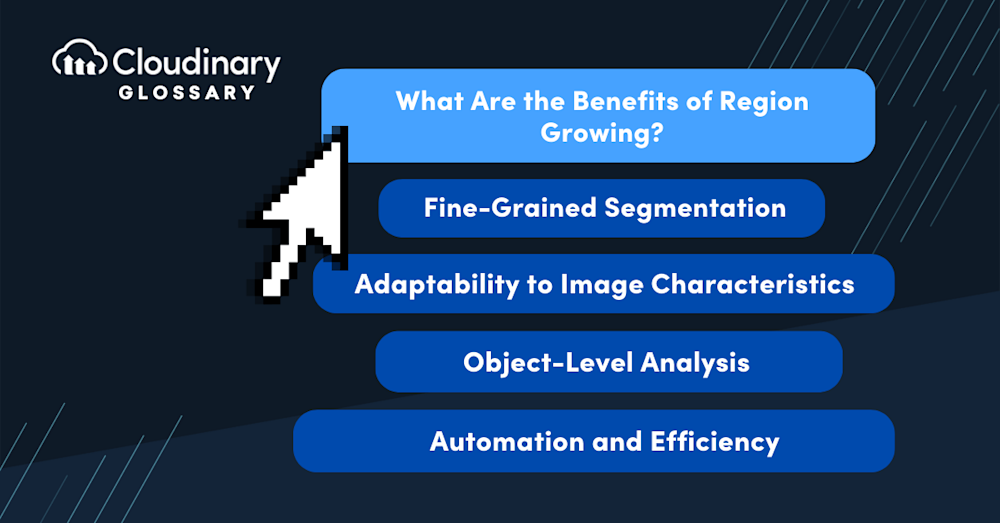What Is Region Growing?
Region Growing is an image segmentation technique that identifies and groups pixels or regions together based on similarity criteria. It starts by selecting a seed pixel or region and gradually expands this seed by incorporating neighboring pixels or regions that meet specific similarity conditions. This iterative process continues until the entire image is segmented into distinct regions.
How is Region Growing Different from The Other Image Segmentation Techniques?
Compared to other traditional image segmentation techniques, such as thresholding or clustering, Region Growing offers unique characteristics and advantages:
- Boundary Sensitivity – Region Growing takes into account local pixel relationships and is capable of capturing fine-grained details and complex boundaries. This makes it particularly useful for segmenting objects or regions with irregular shapes or intricate boundaries.
- Adaptive and Data-Driven – Region Growing is an adaptive technique that dynamically determines the similarity criteria based on the local image characteristics. This data-driven approach makes the segmentation robust to variations in intensity, texture, and noise levels.
- Object-Level Segmentation – Unlike simple thresholding techniques, Region Growing can segment images at the object level rather than just individual pixels. By growing regions according to similarity criteria, objects can be identified and isolated more accurately, enabling more meaningful analysis and understanding.
- Less Sensitive to Initialization – Region Growing does not require manual initialization parameters, such as the number of clusters or distance thresholds, as in clustering techniques. This makes it a more user-friendly and less parameter-dependent method for segmentation.
What Are the Benefits of Region Growing?
Region Growing offers several benefits that make it a valuable tool for image analysis and computer vision tasks:
- Fine-Grained Segmentation – Region Growing allows for fine-grained segmentation, capturing intricate details and boundaries. This is especially useful in tasks that require precise object identification or analysis, such as medical image analysis or object recognition.
- Adaptability to Image Characteristics – The adaptive nature of Region Growing enables it to handle variations in image intensity, texture, and noise levels. This makes it robust and versatile, suitable for various images and applications.
- Object-Level Analysis – Region Growing facilitates more meaningful analysis and understanding of images by segmenting at the object level. Objects can be isolated and analyzed individually, leading to better insights and applications like object tracking or shape analysis.
- Automation and Efficiency – Region Growing automates the segmentation process, reducing the need for manual intervention. This increases efficiency, allowing large datasets to be processed quickly and consistently.
Final Thoughts
Region Growing is a powerful technique that empowers fine-grained segmentation by iteratively growing regions based on similarity criteria. With its boundary sensitivity, adaptability to image characteristics, object-level segmentation, and automation capabilities, Region Growing offers unique benefits over other image segmentation techniques.
To leverage the potential of Region Growing and streamline your image analysis workflows, consider utilizing the capabilities of a comprehensive media management platform like Cloudinary. Cloudinary’s AI-powered image analysis and segmentation features simplify the region growing process, allowing you to extract meaningful insights and unlock the potential of fine-grained image segmentation.
Transform and optimize your images and videos effortlessly with Cloudinary. Sign up today and start optimizing your image analysis workflows today.





